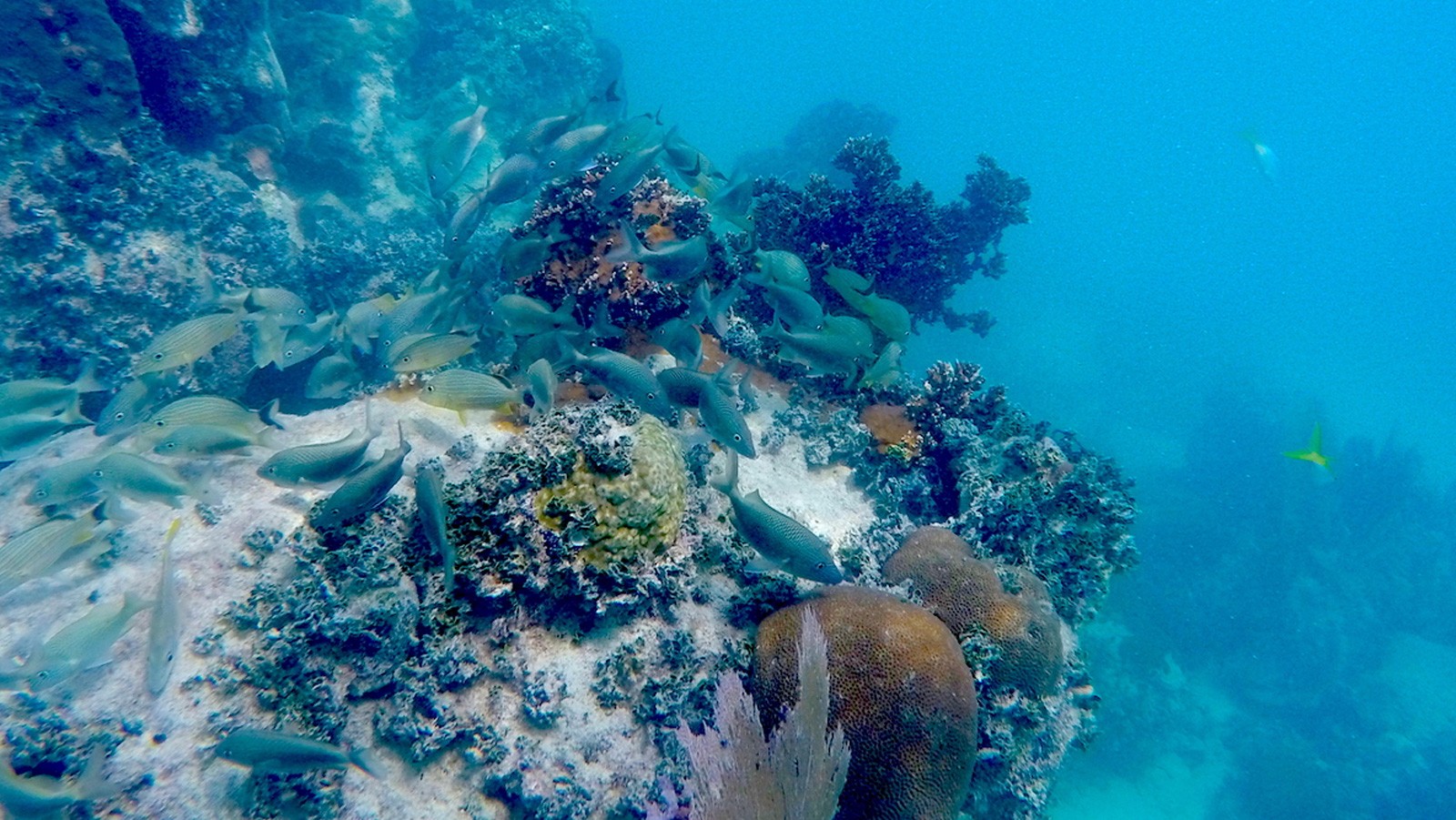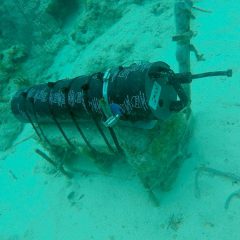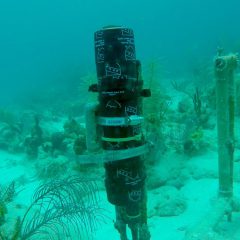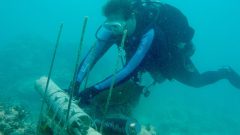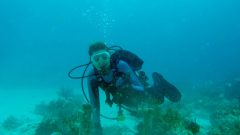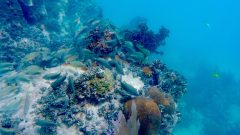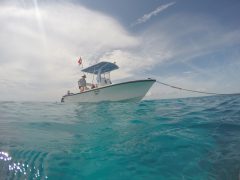From March 1st through March 3rd, AOML coral scientists traveled to reefs in the Upper and Lower Florida Keys to swap out instruments being used for an ongoing coral bleaching study. Both pH and light loggers were collected and deployed at inshore and offshore study sites. The pH loggers, known as SeaFETs, are used to provide accurate measurements of seawater pH over long periods of time. For light measurements, ECO-PAR sensors are installed to record highly accurate measurements of PAR, or photosynthetically active radiation, the spectral range of solar radiation from 400 to 700 nanometers that photosynthetic organisms are able to use in the process of photosynthesis.
Photo credit: NOAA
Image Captions
From Left:
- A newly installed ECO-PAR sensor to measure light on the reef. Image credit: NOAA
- A newly installed ECO-PAR sensor to measure light on the reef. Image credit: NOAA
- AOML coral scientist Renee Carlton prepares to swap out the ECO-PAR instrument at a dive site in the Upper Keys. Image credit: NOAA
- AOML coral scientist Renee Carlton prepares to swap out the ECO-PAR instrument at a dive site in the Upper Keys. Image credit: NOAA
- Healthy coral and reef fish along the dive site. Image credit: NOAA
- AOML coral scientists prepare for their dive at a reef in the Upper Keys. Image credit: NOAA
